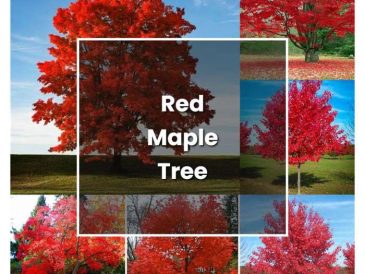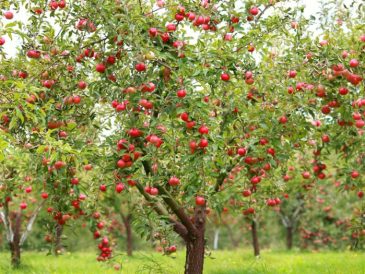Choosing the Right Tree for Your Location

Plant a tree for earth day – Selecting the appropriate tree species for planting is crucial for its long-term health and contribution to the environment. A tree that thrives in one location may struggle or even die in another due to differing environmental conditions. Careful consideration of several factors ensures a successful planting and a flourishing tree.Successful tree planting hinges on understanding the interplay between the tree’s needs and the site’s characteristics.
Ignoring these factors can lead to unnecessary maintenance, reduced lifespan, and ultimately, a failed planting effort. The right tree in the right place will not only enhance the landscape but also contribute significantly to the local ecosystem.
Factors Influencing Tree Species Selection, Plant a tree for earth day
Choosing a tree involves considering climate, soil type, and available space. Climate encompasses temperature ranges, rainfall patterns, and the frequency of extreme weather events like frost or drought. Soil type dictates drainage, nutrient content, and pH levels, all of which influence root development and overall tree health. Finally, the available space determines the tree’s potential size at maturity, preventing overcrowding and ensuring ample room for growth.
Mismatches in any of these areas can severely impact the tree’s survival and growth. For instance, planting a large oak tree in a small garden will inevitably lead to problems later.
Planting a tree for Earth Day is a fantastic way to give back to our planet! If you’re looking to participate this fall, why not check out this helpful guide on trees to plant in the fall to find the perfect species for your area. Remember, choosing the right tree ensures it thrives and continues to benefit the environment for years to come, making your Earth Day contribution even more impactful.
Native Tree Species for Different Climate Zones
Selecting native tree species offers numerous ecological benefits. Native trees are adapted to the local climate and soil conditions, requiring less maintenance and promoting biodiversity. They support local wildlife by providing food and habitat. The following are examples, though specific species suitability depends on microclimates and soil variations within each zone.
- Temperate Climates (e.g., Northeastern US): American Elm ( Ulmus americana), Sugar Maple ( Acer saccharum), Red Oak ( Quercus rubra). These trees are known for their tolerance of moderate temperatures and seasonal changes. The American Elm, while susceptible to Dutch elm disease, is making a comeback with disease-resistant cultivars.
- Mediterranean Climates (e.g., California): California Sycamore ( Platanus racemosa), Coast Live Oak ( Quercus agrifolia), Toyon ( Heteromeles arbutifolia). These species are adapted to hot, dry summers and mild, wet winters. The drought tolerance of Coast Live Oak makes it a particularly suitable choice for water-scarce regions.
- Tropical Climates (e.g., Florida): Red Mangrove ( Rhizophora mangle), Cabbage Palm ( Sabal palmetto), Southern Live Oak ( Quercus virginiana). These trees thrive in warm, humid conditions and often tolerate salty or brackish water, as is the case with Red Mangroves in coastal areas.
Fast-Growing vs. Slow-Growing Trees in Urban Environments
Fast-growing trees offer rapid aesthetic improvements and carbon sequestration, but may have shorter lifespans and require more frequent maintenance due to their faster growth rate, potentially leading to more frequent pruning and structural issues. Slow-growing trees, conversely, tend to be more robust and long-lived, needing less maintenance in the long run, but providing slower aesthetic improvements. The choice depends on the specific urban planning goals and long-term maintenance capacity.
For instance, a park might benefit from a mix of both, with fast-growing trees providing immediate impact and slow-growing trees offering long-term stability. In contrast, a smaller urban garden might be better suited to a slower-growing, smaller mature size tree.
Long-Term Care and Maintenance of Newly Planted Trees

Planting a tree is a significant commitment, extending far beyond the initial act of placing it in the ground. The success of your tree, its longevity, and its contribution to the environment depend heavily on consistent and appropriate care during its early years and beyond. Neglecting post-planting maintenance can lead to stunted growth, disease, or even death, undermining the positive impact you intended.Successful tree establishment requires a multifaceted approach encompassing regular watering, appropriate mulching, and proactive pest and disease management.
This long-term care ensures the tree thrives and fulfills its ecological and aesthetic purposes.
Watering Newly Planted Trees
Proper watering is crucial, especially during the first year. Newly planted trees lack the established root system to efficiently draw water from the soil. Insufficient watering can lead to wilting, stress, and reduced growth. Conversely, overwatering can lead to root rot. The ideal watering schedule depends on factors such as climate, soil type, and tree species.
Generally, deep, infrequent watering is preferred to shallow, frequent watering. Aim to keep the soil consistently moist but not waterlogged, particularly during dry spells. Consider using a soaker hose or drip irrigation system for efficient and targeted watering.
Mulching for Tree Health
Applying a layer of mulch around the base of the newly planted tree offers several benefits. Mulch helps retain soil moisture, reducing the frequency of watering. It also suppresses weed growth, reducing competition for nutrients and water. Furthermore, mulch helps regulate soil temperature, protecting roots from extreme heat and cold. Use organic mulches such as wood chips or shredded bark, avoiding mulches that contain weed seeds or are treated with chemicals.
Apply a layer of mulch 2-3 inches deep, keeping it a few inches away from the tree trunk to prevent fungal diseases.
Pest and Disease Control
Regular inspection for pests and diseases is essential. Early detection allows for timely intervention, preventing significant damage. Common tree pests include aphids, scale insects, and borers. Diseases such as root rot, leaf spot, and canker can also affect tree health. Appropriate pest and disease control measures range from pruning infected branches to applying insecticidal soaps or fungicides.
Always choose environmentally friendly options whenever possible and consult with a local arborist for advice on specific pests and diseases prevalent in your area.
“Prevention is key to successful tree care. Regular monitoring, proper watering, and timely mulching can significantly reduce the risk of pest and disease problems. Don’t hesitate to seek professional advice if you encounter issues you can’t resolve yourself.” – Dr. Emily Carter, Arborist and Professor of Horticultural Science
Long-Term Tree Maintenance Schedule
The following schedule Artikels key maintenance tasks for the first year, five years, and ten years after planting:
| Task | First Year | Five Years | Ten Years |
|---|---|---|---|
| Watering | Frequent, deep watering, especially during dry spells. | Monitor soil moisture; water deeply during prolonged dry periods. | Water deeply during extended droughts, especially for younger trees. |
| Mulching | Apply 2-3 inches of organic mulch, keeping it away from the trunk. | Reapply mulch as needed, maintaining a 2-3 inch layer. | Reapply mulch as needed, maintaining a 2-3 inch layer. |
| Pest & Disease Monitoring | Regularly inspect for pests and diseases; treat promptly if found. | Annual inspection for pests and diseases; treat as needed. | Annual inspection for pests and diseases; treat as needed. Consider professional assessment for major issues. |
| Pruning | Remove any dead, damaged, or crossing branches. | Prune to maintain shape and remove dead or diseased wood. | Prune to maintain shape and remove dead or diseased wood. Consider professional pruning for larger trees. |
Detailed FAQs: Plant A Tree For Earth Day
What if I don’t have a garden?
No worries, mate! Check out local community gardens or see if your council has any tree-planting initiatives. Loads of places are happy to have your help.
How long does it take for a tree to grow properly?
That depends on the type of tree, but you’ll see noticeable growth within a few years. It’s a marathon, not a sprint, so be patient and keep looking after it!
What if my tree gets ill?
Keep an eye out for pests or diseases. If you spot something dodgy, contact your local council’s parks department or a gardening expert for advice. Don’t panic – they’re usually pretty easy to sort out.
Can I plant any tree anywhere?
Nah, mate. Choose a tree suitable for your climate and soil type. Planting the wrong tree in the wrong place is a recipe for disaster. Do your research first!




